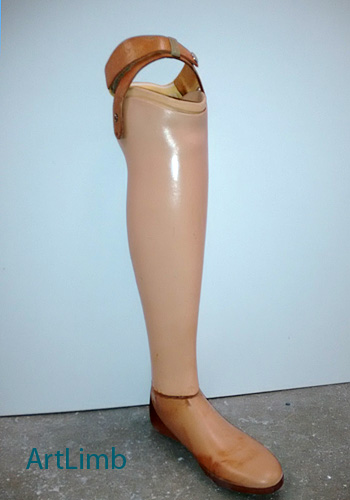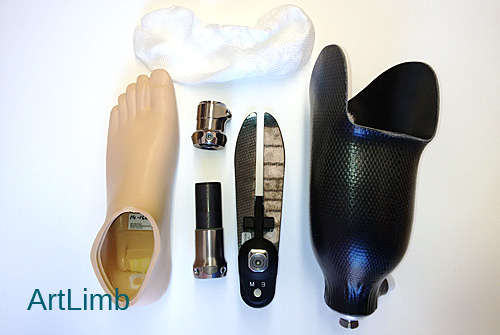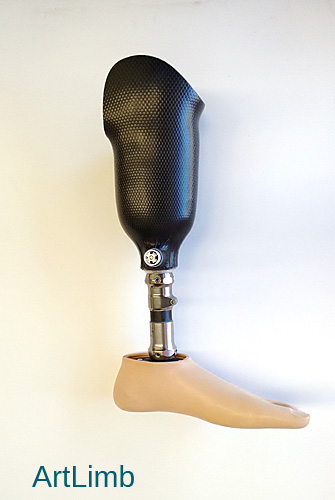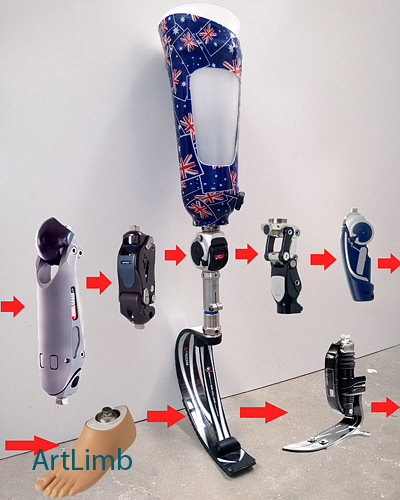Currently there are two main types of prosthetic limb, modular and exoskeletal.
In our practice we generally recommend the modular design for most of our clients due to its continued adjustability. Even after the limb is finished, we can replace the socket to follow stump changes, readjust components to accommodate to changes in you circumstances (lifestyle, body weight, etc) and even completely replace damaged or worn parts.
Photo below demonstrates an example of an exoskeletal prostheses. This one-piece leg is not adjustable after the initial fitting and the only replaceable part is the foot. Due to the restricted connection options, only very simple feet are compatible with this design.
These legs were historically used as a hardwearing option for more rural environments as it was believed the simple design was more robust.
Photo below demonstrates components for the modular prosthetic limb.
Photo below demonstrates a modular prosthetic limb assembled from components shown in the previous photo.
All components are easily interchangeable. This is important when parts wear down with age or if a different type of component is needed.
Photo below demonstrates the additional adjustability of the modular setup. We have set these parts to their end range to depict the range of adjustability available.
Each component has adjustable connectors which can allow for tuning of the prosthetic limb even several years after the original fitting.
A modular construction is compatible with thousands of different feet, knees and other components to make up limbs to best match the individual requirements. When making an artificial limb, we take into account the lifestyles, activities, working environments and general abilities of the user to choose the most appropriate components.





